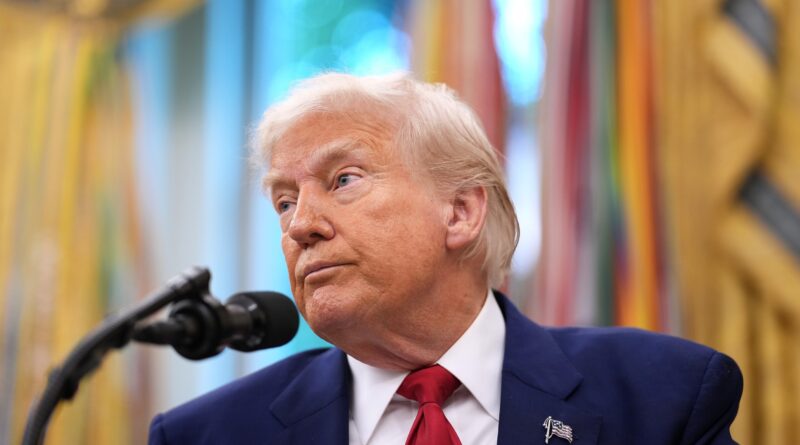Trump Doubles Tariff On India For Fueling ‘Russian War Machine’
President Donald Trump signed a sweeping executive order Wednesday morning doubling tariffs on Indian exports to the United States, raising the total to 50%, in response to India’s continued purchases of Russian oil amid the ongoing war in Ukraine. The move marks one of the most forceful trade retaliations yet in Trump’s second term.
The additional 25% hike comes just one week after Trump’s initial tariff package slapped India with a 25% duty as part of his larger “Liberation Day” trade offensive. The new tariff will go into effect in 21 days, targeting India’s largest export sectors: refined petroleum, jewelry, pharmaceuticals, and textiles.
“India is not only buying massive amounts of Russian oil, they are then, for much of the oil purchased, selling it on the Open Market for big profits,” Trump said earlier this week. “They don’t care how many people in Ukraine are being killed by the Russian War Machine.”
The Trump administration has accused New Delhi of undermining global efforts to isolate Vladimir Putin’s regime by ramping up Russian oil imports following the 2022 invasion of Ukraine. U.S. intelligence and energy analysts have noted that Indian refiners have been buying discounted Russian crude and reselling refined products at a premium to Europe and the United States.
On Monday, Trump warned India that further penalties were coming if it continued “fueling the Russian war machine.” His latest executive order confirms that warning and positions India among the most heavily penalized nations under the new U.S. tariff regime—alongside China and Brazil.
In addition to the direct tariffs on India, Trump also floated the idea of imposing a “100% secondary tariff” on Russia—one that would penalize any country continuing trade with Moscow. If implemented, that measure could send India’s tariff rate even higher, effectively cutting off one of its most lucrative trade relationships with the United States.
The White House made clear that Trump’s actions were driven by both economic and geopolitical considerations. “India has chosen to side with Russia despite repeated diplomatic outreach and efforts to resolve the Ukraine conflict peacefully,” one senior administration official said. “The president is making it clear: there is a price to pay for financing aggression.”
India, for its part, pushed back hard. A spokesperson from India’s Ministry of External Affairs said the country was being unfairly “targeted” and noted the hypocrisy of “nations who continue indirect trade with Russia now turning to blame others.”
Despite India’s complaints, Trump’s move is likely to play well politically. With the 2026 midterms on the horizon, the president is making aggressive use of tariffs to signal strength on national security and domestic manufacturing, echoing his first-term strategy that appealed to swing-state voters and American workers.
The impact of a 50% tariff could be massive. India exports tens of billions of dollars of goods to the U.S. each year, with major industries already struggling to adapt to the earlier round of tariffs. Pharmaceutical and tech sectors are particularly concerned, given their heavy reliance on U.S. markets.
If India fails to alter its relationship with Russia—or if Russia refuses to accept a peace deal by Trump’s stated deadline—the White House has hinted that even steeper penalties may follow.


